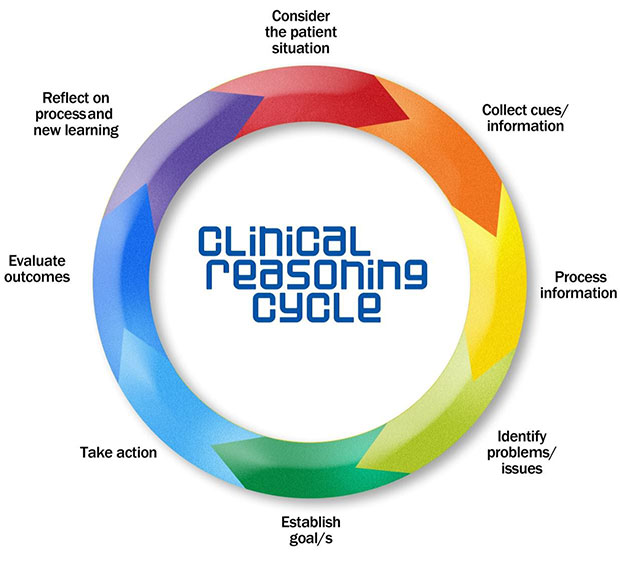Task Three: Assessing a student’s clinical reasoning
 REFLECTION: Clinical Reasoning is a cyclical process – review the image and hyperlink below to assist with the next part of this module
REFLECTION: Clinical Reasoning is a cyclical process – review the image and hyperlink below to assist with the next part of this module
This page shows a more detailed version of the CRC diagram.
 Video 3
Video 3
- Why has the student chosen this aspect of physical performance to measure? (you may need to review a previous video)
Which part of the clinical reasoning process does this relate to?
Considering the patient’s situationWhich part of the APP competencies can you measure after this short video?
This scenario indicates that the student has chosen relevant physical and functional tasks to be included in the objective assessment based on the subjective assessment; these relate to items 7 and 8 in the APP - Watch this video of the student assessing the patient’s gait.
 Video 4
Video 4Which part of the clinical reasoning process does this relate to?
Collecting informationThe following are two short videos that show discussion with the supervisor.
 Video 5
Video 5Which part of the clinical reasoning process does this relate to?
Processing information and Identifying problems and Issues Video 6
Video 6Which part of the clinical reasoning process does this relate to?
Identifying problems and Issues and determining what other information is requiredWhich part of the APP competencies can you measure after this short video?
This scenario indicates that the student has identified potential problems, and started to prioritise them is planning relevant objective assessment to gather more information; this relates to item 11 in the APP (go to drop box below)Use item 11 to assist you in recording the student’s performance in identification of problems.
11. Identifies and prioritises patient's/client's problems. 0, 1, 2, 3, or 4 (rate the student’s performance only when you have enough evidence to make a judgement). generates a list of problems from the assessment justifies prioritisation of problem list based on knowledge and clinical reasoning collaborates with the patient/client to prioritise the problems considers patient’s/clients values, priorities and needs